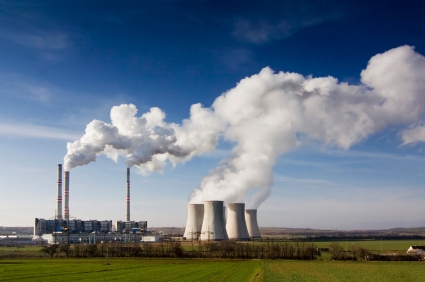 For all the good it’s done in helping us breathe easier, you’d think by now the Clean Air Act would get more respect.
For all the good it’s done in helping us breathe easier, you’d think by now the Clean Air Act would get more respect.
Enacted in 1970, and updated to its present form in the 1990’s, the act has taken the lead out of gasoline, tackled destructive acid rain, and reduced crippling smog.
Yet, the Clean Air Act is once again under attack, spurred by the EPA’s recent efforts to protect downwind states from neighboring states’ pollution, and new regulations to deal with hazardous air pollutants such as mercury, arsenic, lead, cyanide, sulfur dioxide, and nitrogen oxides. Stronger air quality standards should have been implemented long ago, but powerful interest groups have resisted every step of the way, especially energy companies who have failed to install pollution control equipment at their coal-fired power plants, despite having decades of advanced notice that such requirements were coming.
New proposals in Congress threaten to preempt, delay, or weaken Clean Air Act standards for hazardous air pollutants. Comprehensive implementation of the Clean Air Act seems to have become a bargaining chit in the ongoing debate over climate change policy.
The truth is that the proposed EPA regulations have nothing to do with carbon and everything to do with every day toxic pollutants from power plants — pollutants we know wreck havoc with human health especially for our most susceptible citizens: children, the elderly, and people with respiratory illnesses like asthma.
Opponents of stronger air quality standards are also trotting out the same tired arguments that it’s too expensive and risky. In my three decades working on cleaner air implementation, as a Federal and State regulator and in private practice, I’ve heard this song played over and over again. Yet, the repeated dire warnings of the economic catastrophe never materialize. In the 1980’s, a host of studies estimated the cost of compliance of the coming acid rain regulations to range from $2.5 billion to $5 billion. In 1995, however, the Energy Information Administration retrospectively calculated the actual impact to be around $836 million. Indeed, the sky does not fall but actually gets much cleaner.
When I was director of the Illinois EPA, I chaired the Ozone Transport Assessment Group, an effort by 37 states working with the U.S. EPA and thousands of stakeholders from every major industry in this country to understand the science of ozone transport and develop strategies for addressing it. We gathered the most robust science ever assembled. The opposition from the polluters was fierce. “It can’t be done” was the battle cry. But it was done. The result is now beyond dispute. Take Chicago for example, which until recently had one of the nine worst ozone pollution records. Thanks to the Clean Air Act, this summer, the seventh hottest on record, Chicago recorded not a single high-ozone day. Likewise, compared to a decade ago, the Northeast this summer had less than half the high ozone days.
Over the last 40 years, the EPA has done a good job standing up to very powerful interests to fulfill its promise of helping 300 million Americans breathe clean, healthy air. In this latest battle to implement the Clean Air Act, we should dismiss the old, disproven arguments and ensure the ongoing debate over climate change doesn’t undermine 40 years of efforts to help Americans breather easier, live healthier.



